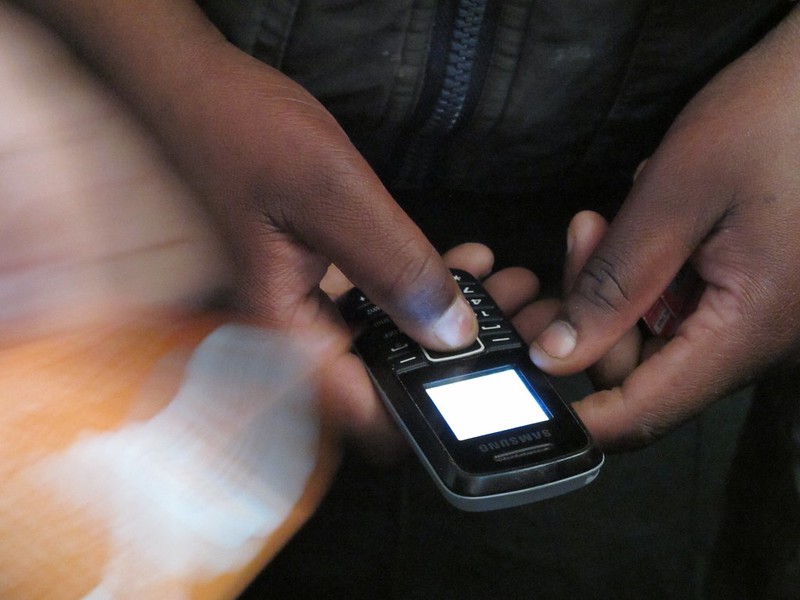Tine Hanrieder reviews Who Cares? Care Extraction and the Struggles of Indian Health Workers, edited by Christa Wichterich and Maya John.
India is now the most populous country, and her health services are by far not keeping up with growing needs. The workers – mostly women –, who provide badly needed healthcare work, are celebrated as heroes supporting the country through nightmares such as Covid-19. But most health workers are struggling, exploited, burning out in precarious jobs, or not even recognized as workers. And, so the editors of ‘Who Cares? Care Extraction and the Struggles of Indian Health Workers’ explain in their introduction, while the nurse-to-patient ratio is way too low in Indian hospitals – averaging 1:40 in general wards compared to the WHO standard of 1:4 – migration to high-income countries is often the best option for nurses who need to repay student loans and support their families, and who hope to find decent work abroad.
Whoever wants to understand these dynamics and the many facets of healthcare work in India will find a highly rewarding read in the volume edited by Christa Wichterich and Maya John. It offers rich empirical material and a plethora of insights into a privatizing and enormously stratified healthcare system, which reproduces the exploitation and division of health workers and intersects with social, regional, gender, caste, and class inequalities.
The book is divided into a substantive introduction detailing healthcare economies and nurses’ labour struggles in India, and two main empirical parts. Part I analyses different aspects of nursing in India. Part II focuses on migrant nurses in Europe and the Gulf. This second part also includes first-person life stories of migrant nurses, and a photo essay about South Indian nurses who migrated to Germany in the 1960s. These voices and visuals powerfully illustrate the complexity of migrant nurse experiences.
Devalued carers, some more than others
While the devaluation of healthcare work is a worldwide phenomenon, it is also contextual. As this volume makes plain, Indian healthcare workers’ struggles are deeply intertwined with patriarchy, casteism, classism, and the privatization of health services in the country. Furthermore, the experiences of Indian health workers are far from uniform – they are extremely segmented and stratified. Not only does India have an extreme pay gap of over 80 percent between doctors and nurses (compared to South Africa: 55, Argentina: 38, and Germany: 12 percent), but also the differences between categories of nurses and care workers are drastic.
This is amply demonstrated in the Part I chapters by Panchali Ray (on nurses and nursing aides in Kolkata), Sneha Makkad (on fragmented unionization in Punjab), Maya John (on educational hierarchies and segmented labour markets in India), and Christa Wichterich (on Covid-19 and the political economy of digitalization). The most privileged and fortunate nurses can access highly competitive, subsidized education and tend to fill the coveted jobs in public hospitals: in good, well-paid, and secure jobs. It helps if you can afford private coaching to achieve this status.
But most nurses – usually those from lower classes and castes – are not that lucky. They either enter the profession through private nursing education (accruing debt through student loans) and tend to work in poorly paid private sector jobs. Furthermore, a major workforce of unlicensed nurses, who are trained on the job but are denied any decent work or career progression, make up the invisible bulk of the nursing workforce. For the lower rungs, nursing work is marked by harsh conditions such as lacking access to toilets, not receiving their meagre wage on time, disrespect and sexual violence, and a massive, even violent repression of labour struggles and unionization attempts.
And at the bottom of the pyramid, one finds again state-employed workers, just that they are not recognized as workers and thus lack labour protection. These are the ‘voluntary’ health workers such as ASHAs (Accredited Social Health Activists) and Anganwadi workers and helpers and other workers deployed in government schemes. As Seemi Zafar’s chapter on ASHAs explains, their main income usually comes through piece rate incentives. Perversely, this meant that during the Covid-19 lockdowns, when ASHAs were sent to the frontlines without protection and celebrated as national heroes, their net income decreased because they could not provide many of the standard services they are usually paid for. While ASHA workers’ protests and struggles have made headlines and led to several small wins, they are still not recognized as workers.
Divided struggles, and the migration option
One important implication of this workforce fragmentation is the limited power to unite. Unionization is much denser for the higher rungs, and different categories of workers have different unions, who are divided rather than fighting together. Furthermore, as John observes borrowing from Bhattacharya and Behal, labour organizing is often ‘vernacular’, i.e., grounded in caste or community allegiances rather than occupation. This complicates the prospects of organizing for better recognition of health work.
While migration as an option and solution to domestic exploitation and student debts comes up across Part I as well, Part II shows in-depth the ambivalence of nurse migration from India. The chapters by Margaret Walton-Roberts and S. Irudaya Rajan, Ester Gallo, Urmila Goal, Tanja Ahlin and Philomina Chakkalakkal, and the life stories illuminate how migration can empower women nurses and support their families, but also involves huge sacrifices and deskilling along the way. The chance to migrate is often the only hope for better work, and these prospects also attract an increasing share of males to the nursing profession. Yet the journey, often a step-migration journey moving up the ladder from less to more attractive states or passing through exploitative hospitals to gather experience, is full of hurdles. Some Indian unions have pragmatically turned to facilitating migration as the most pragmatic way of supporting workers.
An unfavourable global context
Taken together, the essays in this book shed important light on the devaluation of labour in the globalized Indian healthcare economy. There is little though in terms of hope or ways forward. Migration looks like the best option for many nurses. In the context of heated international discussions about brain drain, these are sobering analyses. As international recruiters such as the NHS are poaching Indian nurses, the government seems disinterested in capitalizing on this rush for Indian nurses to ask for health system support in return. Worker empowerment seems out of sight, and a 2017 government decree to further contractualize nursing labour is further weakening the workforce.
Unions are busted or fragmented, and entrenched inequalities and social conflicts are reproduced. The editors’ bets seem to be on uniting worker struggles across categories of workers, and in contesting neoliberalism and privatization more generally. As long as Indian healthcare remains underfunded, dysfunctional and keeps marketizing, and foreign countries can poach Indian workers without meaningful compensation, the broader context for these struggles is anything but favourable.
The views expressed in this post are those of the author and do not reflect those of the International Development LSE blog or the London School of Economics and Political Science.
Featured image: Accredited Social Health Activists (ASHA) attend a leadership training/workshop at a health Centre in Cheyyur Kancheepuram, in Chennai, India. Credit: PSI via Flickr.





